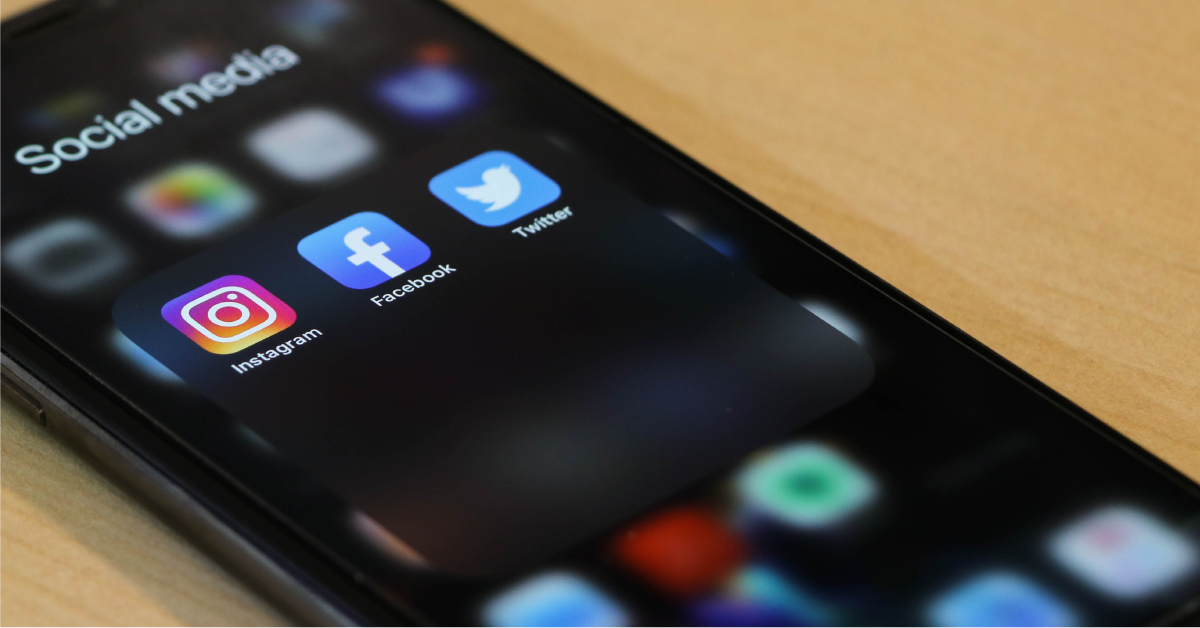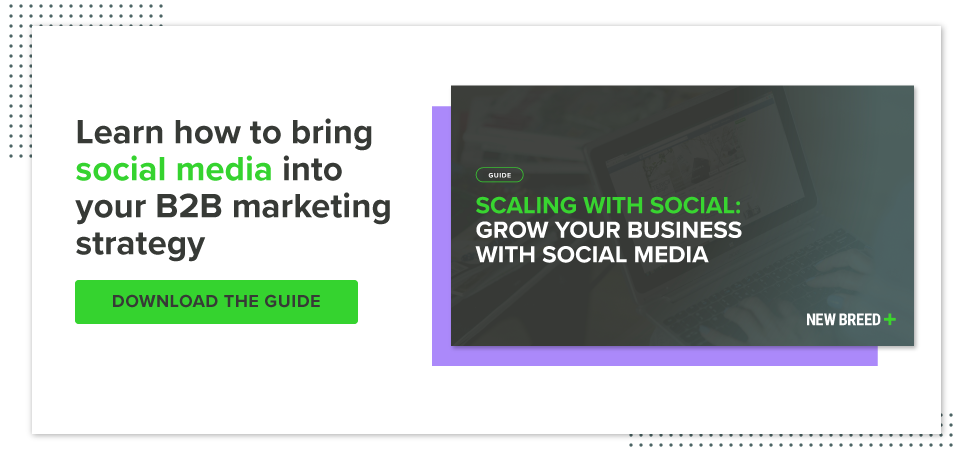The Social Media KPIs Your SaaS Company Should be Tracking

With over two billion users on Facebook, one billion users on Instagram and 500 million users on Linkedin, it’s common knowledge that a good social media strategy can help your business grow. Developing and executing a strategy that’s right for your company, however, isn’t as simple.
First and foremost, it’s important to understand that social media goes well beyond a brand awareness play. Don’t get us wrong, you should have an official-looking and relevant profile if a potential buyer decides to look up your pages. More than that, though, you should consider social media as a means of expanding your current marketing efforts.
Not only does social media allow your message and content to reach a larger audience, it is one of the most impactful ways you can connect with prospective buyers. By replying to comments, and responding to direct messages, your business can build meaningful 1-1 relationships that meet the buyer where they are in their journey.
But, how do you know if your social media strategy is having an impact? That’s where key performance indicators (KPIs) come into play. These metrics will help you evaluate the impact social media has on your business goals.
Reach
If your social media goals are tied to brand awareness, you’ll want to be tracking the following metrics:
Total followers, or more importantly, follower growth rate: tracking how your followers increase over time, and at what rate, will allow you to determine your strategy going forward for growing your audience. Your follower growth rate gives you a good idea of whether your business is expanding its reach and catching new people’s attention. If it’s stagnating month over month, it’s time to try a new strategy.
Reach and impressions: these two terms are often used interchangeably when it comes to discussing how many people are seeing your content. It’s important to note the difference between them, though, and how they relate to your goals. Reach is the total number of people who see your content, whereas impressions are the number of times your content is displayed. In other words, reach is the number of unique views your content receives. Impressions will almost always be higher than reach. Reach and impressions can indicate how large of an audience your content is reaching, and can reflect if a certain strategy — such as hashtag use — is increasing that audience size.
SOV & SOI: share of voice (SOV) is defined as the percentage of coverage and conversations about your brand relative to your competitors. It’s important to note that SOV only tracks the quantity, and not the quality of mentions. Sphere of influence (SOI), on the other hand, tracks the quality and impact of mentions. There are a wide range of analytics platforms, such as Sprout Social and Hootsuite, with built-in tools that automatically calculate your SOV and SOI relative to similar brands. Knowing your SOV is a great place to start when it comes to understanding your market position and benchmarking your success against competitors.
Mentions: by using social listening tools, you can track the number of times your brand is mentioned across social media platforms. This allows you to monitor and assess customer sentiment and understand how your brand is being perceived.
Engagement
The following KPIs reveal how engaged your audience is and how they are interacting with your content, which is most often used to indicate the success of your campaigns.
Likes, comments, retweets, clicks and shares: These are pretty straight forward. Tracking how many people take the time to double tap your content indicates the level of interest in your content. If your most recent post got more likes than a previous post, it’s usually a solid indicator that your most recent post was more interesting to your audience. This can inform that type of posts and content you want to create.
Engagement rate: Engagement rate allows you to measure the health of your engagement levels and put it in context. Your post got 20 likes, but what does that indicate? Calculating your engagement rate allows you to compare it to industry and platform benchmarks. Engagement rate can be calculated differently, but engagement rate by reach (ERR) is the one we recommend; It’s more accurate than follower count, as not all your followers will see all your content. ERR is calculated by the number of engagements your post received (likes, comments, retweets, clicks, and shares) divided by the number of people it reached and multiplied by 100.
Revenue / ROI
Let’s be honest: Measuring social media ROI is what executives will gravitate toward, even though not everything you do on social media translates directly into dollars and cents. These metrics are harder to drive but will help you understand how social media directly impacts your business’s bottom line.
Lead conversions: this will look different from company to company, but could be any of the following: email signups, gated content downloads or free trials signups. Leads indicate interest in your company and signify the start of the buyer’s journey. Within your CRM, you can sort your leads by original source to track which derived from social media.
Direct purchases: A social conversion means someone visited via a social media channel and then purchased something in that same visit. This allows you to track the direct impact of your social posts and efforts are having on revenue.
Click-through rate (CTR): A high click-through rate means an effective ad or post. While technically, this could be considered an engagement metric, it’s under the ROI category due to its correlation with conversions. A higher CTR typically results in a higher number of conversions. CTR is most often calculated by the number of clicks that your post or ad receives divided by the number of times your ad is shown (impressions).
Retention and Loyalty
If your business goals are centered around customer service or retaining customers, you’ll want to focus on the following KPIs:
Ratings and reviews: customer reviews or ratings of your business are a great way to understand and measure how your customers think about your company and products. Keeping track of customer sentiment is essential for maintaining positive brand awareness and referrals. It always provides key insights into the ways you can adapt your business to best fit customer needs.
Time to respond and resolve: this is how long it takes for a question that comes in from social media to receive not just a reply, but also a resolution. Customers appreciate timely responses, and feeling like their grievances have not only been heard, but acted upon. The shorter the resolution time, the more likely you’ve won that customer back.
Customer lifetime value (CLV): CLV is the projected revenue a customer will generate in their lifetime. It can be determined by calculating the average purchase value from social media and then multiplying that number by the average purchase frequency rate. You’ll always have to spend money to acquire new customers and to retain existing ones, but the former often costs more. Tracking CLV allows you insight in the health of your customer retention and the profits that come with it.
Takeaway
Social media can play a variety of roles for your business, from brand awareness to engagement to revenue to retention. Setting goals within each of these areas and connecting them to relevant KPIs will allow you to track your growth and ultimately help guide you to craft audience-centric content, prioritize your customers' needs, attribute revenue and access client sentiment.
Kirsten Forrester
Kirsten is an Inbound Strategist at New Breed, specializing in full-funnel marketing and lead gen. When not in work-mode, she's hiking, tending to her plant collection or cuddling with her dog, Theo.





